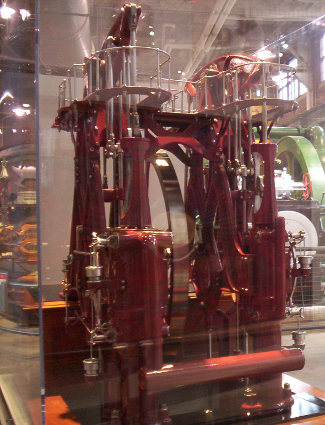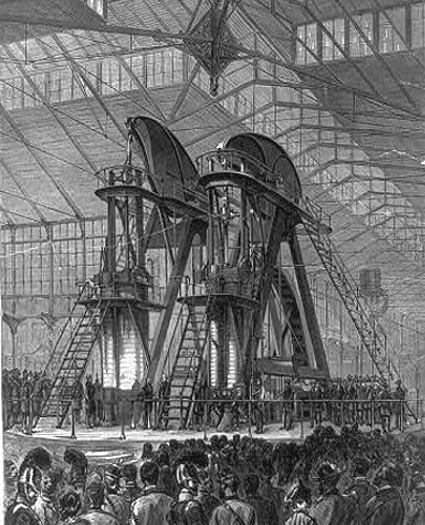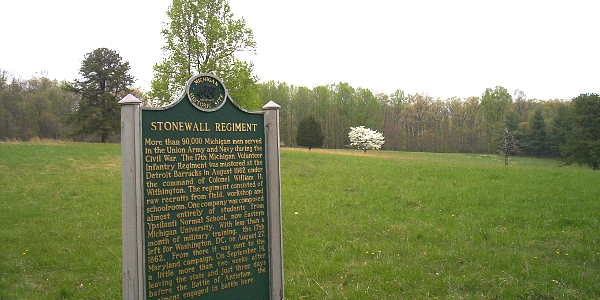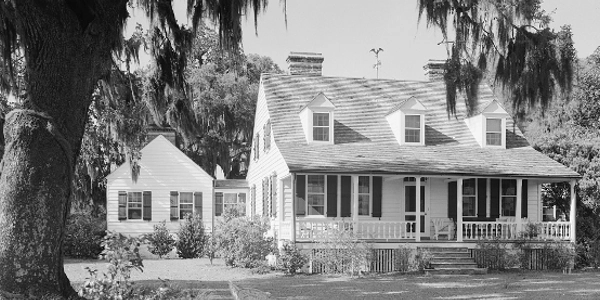
Photo above: The exterior of the National Museum of Industrial History in one of the remaining historic buildings of the Bethlehem Steel Company.
America's Best History Spotlight
On this page we're going to Spotlight the lesser known historic sites and attractions that dot the history landscape across the USA and are worth a visit if you're in their area. And while they may be lesser known, some are very unique, and will be that rare find. You'll be, at times, on the ground floor, or maybe even know something others don't. It'll be fun. Visit them.

National Museum of Industrial History
The steel stacks of the blast furnaces rise above the earth in a foreboding reminder of what the industrial past of the United States had been. In their shadow, the National Museum of Industrial Revolution awaits, just opened in August 2016, and tells the story of the industrial revolution in companies like Bethlehem Steel with exhibits that include reminders of the people and their output in steel, and textiles, and engines. And boy, do they have a lot of those reminders. Just to your right as you enter the 20,000 square foot exhibit hall, you'll see a model of the most important engine in American history; just beyond, you see one of its offsprings in bright green. The Corliss Engine, built for the 1876 Philadelphia Centennial Exhibition, wowed an entire world, proving once and eventually for all, that the might of U.S. power would come from its ingenuity, its invention, its work. Throughout this museum, you'll see examples of that power in metal and cloth. You'll witness exhibits of whimsy (see the hot air balloon for that example) and you'll feel the stories of the men who toiled in those blast furnaces not far outside the windows of this legacy structure. And it will take you back. And it will remind you. And it will marvel you at how powerful a nation would become because of the industrial might exhibited here.
Photo above: An offspring example of the Corliss Engine on exhibit at the National Museum of Industrial Revolution.
- Info
- What is There Now
- History Nearby
-

National Museum of Industrial Revolution
What is related here is not only the history of the industrial revolution, or even that of Bethlehem Steel, it is the history of work in the United States for over one hundred years. From the late 19th century until twenty-five years ago, almost every town in America had factories of steel, textile, or plastics lining the riverbanks and rail lines, providing well paying, important middle class jobs to families and building an America that would power and even dominate the world. You'll see examples of that work, or what real power was before semi-conductors made miniturization the watchword of industrial output. It's in many ways, the story of lives all across the United States.
So take a break from the casino or Musikfest one day and walk into the NMIH. Geez, take a break from staring at your phone. It's a breathtaking example of what America became over one hundred years, and, to be honest, what we've just got to get back to some day soon, or we might just succumb to the fate of the South in the Civil War, unable to provide the necessary items during a time of strife, because those we used to think were friends are making the tough things of life, and we are at the mercy of them to provide it instead of making it ourselves.
Image above: Exterior of the NMIH with large gear display. The National Museum of Industrial History is housed in an original building of the Bethlehem Steel Company.
-
National Museum of Industrial History
What's There
NMIH - 20,000 square feet of exhibit space, 40,000 square feet overall, including many exhibits many on loan from the Smithsonian. Engaging programs and special events. Check the webpage for what's going on the day you intend to come. Sometimes if you dress up, they'll give you a discount.
How Many Visitors
NA. Just open August 2016.
How Much to Visit
Adults - $12
Seniors/Veterans/Students - $11
Youth (7-17) - $9
Children (6 and under) - Free
Hours Open
Normal hours are Wednesday to Sunday 10:00 a.m. to 5:00 p.m. During Musikfest, hours may be extended.
Where Is It Located
602 East 2nd Street, Bethlehem, PA 18015 is the address. To get to the museum, you'll take Exit 67 off Interstate 78 onto Route 412 toward Bethlehem. Route 412 is E. Main Street or Third Street. As you travel down that road, you'll pass the Sands Casino and see the steel stacks of Bethlehem Steel on your right. Turn right on Founders Way, approximately three miles from the Interstate, toward the stacks, then left onto 2nd Street. Look for the entrance to the parking area for the museum.
Website
National Museum of Industrial History.
-
Area Historic Sites
So what else is there to do near the NMIH? Well, there's two obvious ones. For many, if history isn't too big a deal, they'll have a hard time bypassing the large Sands Casino on the way in or out. For others who can take a second history lesson, walk over to the Steelstacks and take the Hoover Mason Trestle Walkway tour or Rise and Fall of Bethlehem Steel tour. At times, they are guided (fee), but you can walk the trestle by yourself and read waysides if the tours are not available when you come. Beneath the stacks, there's also a Visitor Center with exhibits in the oldest building on site. Artsquest is a unique art and cinema space opposite the Steelstacks. You can stop in there for culture, and food.
Visitor Center at Steelstacks
Artsquest
Sands Casino Bethlehem
Photos, History, and More Spotlights

Corliss Engine
It was the star of the show, the model of its brethren which sits in the forefront of the exhibits at the National Museum of Industrial History. Yes, the Corliss Engine sat in Machinery Hall of the Philadelphia Centennial Exhibition. It had been around in various forms for a quarter century, with George Henry Corliss first receiving a patent for a valve gear on March 10, 1849. By 1859, the elements of what would become the famous engine were invented. However, it took a special exhibition, the Philadelphia Centennial of 1876 with over two hundred and eight-four acres of exhibits, essentially the first large scale World's Fair held in the United States, to bring the Corliss Engine to international fame. It powered eight hundred machines in motion in Machinery Hall with a network of shafts over one mile in length. The Centennial Engine was 45 feet tall with a 30 foot flywheel and an output of 1,400 horsepower. When President U.S. Grant and Emperor Dom Pedro of Brazil started the engine at the opening ceremonies, the mouths of the dignitaries in attendance went agape. The ingenuity and size of the engine is regarded as the first blush of industrial might to prove that the United States, only ten years removed from Civil War, would not only be the equal of the European powers in a very short amount of time, but surpass it.
Image above: Model of an original 1870 Corliss Engine in 1/12 scale from the Smithsonian Institution exhibited at the National Museum of Industrial History. The original Corliss exhibited in Machinery Hall in Philadelphia 1876 had many parts in common with the prototype of this model.

Philadelphia Centennial Exhibition 1876
Although the exhibit as the NMIH regards the International Exhibition of Arts, Manufactures and Products of the Soil and Mine in 1876, as it was named in long form, the first official World's Fair in the United States, that's a bit of a stretch. The fair was the first large scale international exhibition in the U.S.A. (a small scale two year fair was held in New York in 1853-4 with luminaries such as P.T. Barnum and Jefferson Davis in official capacities), but not official. There was no sanctioning body for world's fairs until the 1920's, but we're not trying to quibble. The Centennial Exhibition may be the most significant event in United States history almost nobody knows about. While the Corliss Engine was the star of the show, in today's vernacular, there were more important inventions on hand to prove the might and ingenuity of a nation in ascension.
Inside the Machinery Hall beneath the shadow of Corliss stood Alexander Graham Bell with his telephone, Thomas Edison with the phonograph, Colt with the repeating pistol, Otis with the elevator, and McCormick with the reaper. Outside on the grounds stood the torch and arm of the Statue of Liberty. One of the first working monorails ran from Belmont Plateau toward the large halls in the center of the exhibition. The elevated railway was built at Phoenix Steel by General Thomas Stone, of Civil War fame. The fair was marshalled under the tutelage of President U.S. Grant and Pennsylvania Governor John F. Hartranft, also a General in the Civil War.
More than ten million people would visit the exhibition to celebrate the 100th anniversary of the United States, as well as to repair the remmants of the Civil War among the states. Thirty-seven nations would participate. One major building remains in Fairmount Park, Memorial Hall, which now houses the Please Touch Museum and has a large scale model of the centennial inside.
Image above: Engraving of the Corliss Engine at the Philadelphia Centennial Exhibition 1876. Courtesy Library of Congress.

Photo above: The steel stacks of the blast furnaces of Bethlehem Steel and the Hoover Mason Trestle Walkway. Photo below: Musikfest Musical Festival held beneath the steelstacks of Bethlehem Steel for ten days each August. It is the largest free admission music festival in the United States with over one million people attending.

About
America's Best History where we take a look at the timeline of American History and the historic sites and national parks that hold that history within their lands.
Photos courtesy of the Library of Congress, National Archives, National Park Service, americasbesthistory.com and its licensors.



